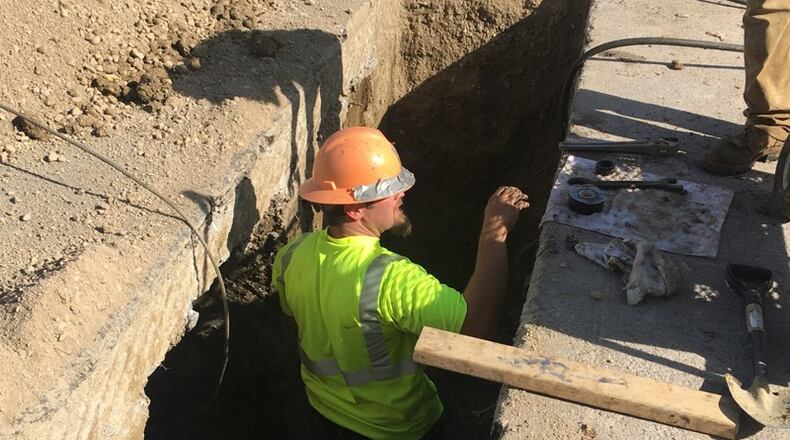1. The city of Dayton is working to identify lead pipes in its expansive water system, but there are only 134 verified lead services lines identified as of now. City officials say the water department provides service for roughly 50,000 connections to homes and businesses in the city.
» RELATED: Ohio water systems to map where lead pipes are located
2. Finding lead pipes in a water system is crucial to protecting the purity of water consumed by residents. Lead exposure has been linked to cognitive impairments and IQ loss in children and fetal death for pregnant women, among other problems for adults. There is no safe level of lead consumption, according to the Center for Disease Control and Prevention
3. Ohio House Bill 512 went into effect in early September after Gov. John Kasich signed the legislation. Under the law, water systems have to identify and map where the lead lines are at in their systems. The deadline to complete the mapping is Thursday, March 9, and city officials said they’re still fine-tuning the results.
» RELATED: After lead scare, more flushing urged to remove sediment
4. The Ohio EPA will issue violations for water systems that fail to complete the mapping before the March deadline, Griesmer said.
5. An estimated 10 million homes in the U.S. are connected to service lines that are at least partially made of lead, according to the U.S. EPA.
»»» READ THE FULL INVESTIGATION » » »
FIVE QUICK BUSINESS READS
FIVE QUICK BUSINESS READS
• 5 things to know about Ohio's largest greenhosue farm
• City working to identify lead pipes in water system
• Frisch's celebrates National Tartar Sauce Day
• hhgregg closing 4 Ohio locations, including area store
• Local ski resort closes due to unseasonable weather
About the Author
